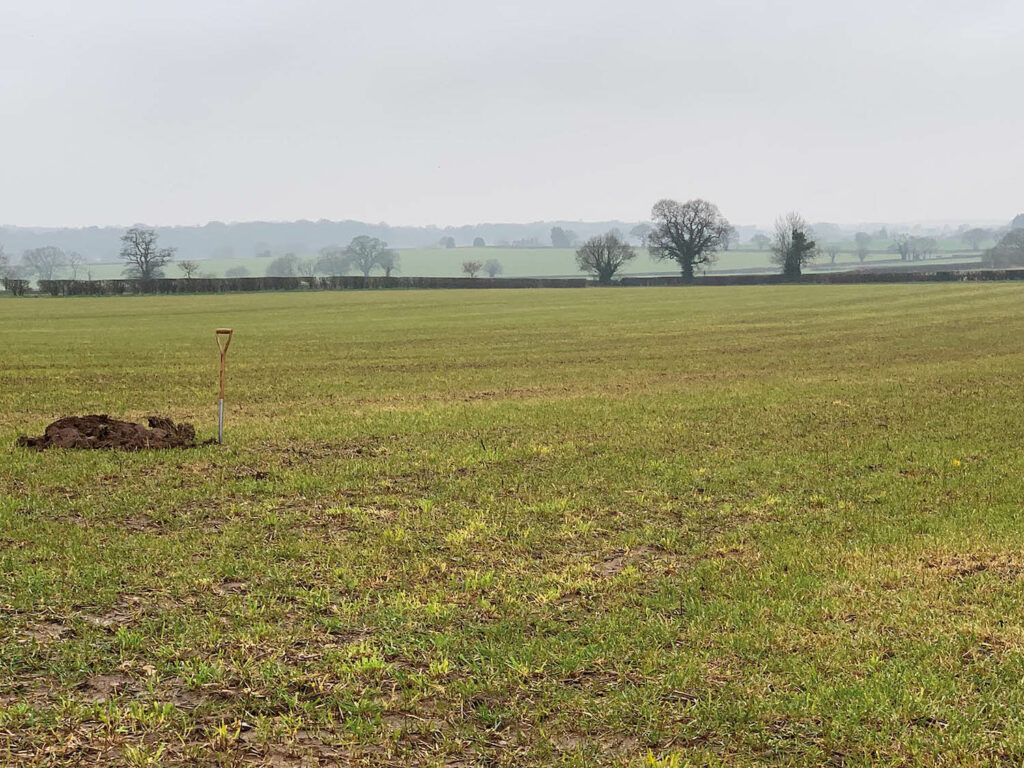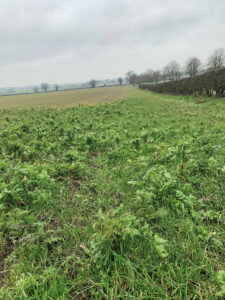Whole farm approach to agroecological farming practices
5th April 2022
This is the premise of the Helix Agroecology Farm hosted by Harry Heath of Whitley Manor Farm, Newport, Shropshire.
Agroecology, or regenerative farming, is a method or practice of farming that has come increasingly into the limelight as growers look for ways of working with nature on their farms – driven by the need to follow a more holistic, environmentally-focused path.
As an industry, we are still not in a position to be able to clearly define all the benefits of many of the practices that we associate with agroecology, says Hutchinsons head of innovation and technology, Stuart Hill.
“The Helix Agroecology farm allows us to use technology to measure and monitor change as agroecological practices are implemented on a farm-scale level so that we can determine the
real benefits they offer in particular situations.
“This is a long-term project that will allow us to look at the whole farm as a biological system, not just certain fields or parts of the farm, and that’s significant. All the key areas of focus are intrinsically linked and will produce data to allow Harry and his agronomist Ed Brown to make the best decisions in an agroecologically sympathetic, but profitable and sustainable way,” he adds.
Five key focus areas across Whitley Manor Farm:
- How can data improve farm sustainability?
- How do we measure and improve soils?
- How do we manage nutrition?
- How do crop genetics benefit the grower?
- Delivering tangible Integrated Crop Management.
Harry Heath took over the running of the family farm back in 2010. Pigs were the mainstay of the business at the time, with between 550–600 breeding sows producing 17,000 pigs/year and 200ha of arable with previous cropping of potatoes and sugar beet.
“Our soils had a legacy of over-cultivation and were not in a good way – worm counts were down, the soil profile was slumping, erosion was increasing after big rain events – we were taking more out of the soils than we were putting back in,” he explains.
“It was time to re-evaluate and look at a long-term strategy that would help restore soil structure. This was our platform into agroecology, so we began to look at which practices we could adopt – whilst also keeping a firm eye on profit.”
Today there are no pigs; contracting and combinable cropping dominates the farm business. A move to agroecological practices in 2019 means that crops are established with minimal cultivations. Cover and catch crops are grown wherever possible. Liquid fertiliser is applied with molasses to feed soil biology. Omnia is integral to all crop and nutrition planning and cost of production analysis is crucial.
“Most importantly what we have learnt about agroecology is that it’s all about keeping an open mind and challenging every decision. We are on a learning curve and it’s important to remember that agroecology is not a religion and sometimes plans need to change – ultimately the crop has to be as profitable as possible,” summarises Harry.
Harry hopes that his work with Helix will help to address specific challenges such as controlling resistant populations of rye-grass, building back up lost soil structure and looking to reduce inputs without compromising crop performance or profit.
Whitley Farm challenges and solutions
Below, Hutchinsons’ Ed Brown outlines the key principles of tackling the challenges within an agroecological remit:
- Controlling Italian ryegrass
Minimise soil disturbance: Sometimes zero-till is not an option where there are challenging weeds burdens. In this situation, we have had to bring back the plough to control the ryegrass, but what is important here is the depth of the plough is kept to minimum; occasionally it is necessary to reset and start again.
Keep the soil covered. Maintain living roots throughout the year. Maximise diversity:
A mix of cover crops is important in offering a diversity of rooting habits, to build structure and help address the slump of the predominantly sandy soils. We used Maxi Cover which contains radish, vetch, clover, linseed, phacelia and buckwheat.
Integrate livestock: Sheep grazed off the cover crops. According to Mr Brown: “Keeping an open mind and challenging every decision is key.”
- Rebuilding soil structure
Planning a soil strategy: A thorough baseline soil measurement was taken, measuring the physical, chemical and biological aspects of the soil. A Gold SSM soil test provided us with this detailed information to help us plan for a long term soil strategy.
An initial group of fields were Terramapped to provide us with accurate soil type maps, from which we could pinpoint where to carry out further assessments.
- Nitrogen
Improving nitrogen use efficiency: It is imperative that we are only using what is needed by the crop – to ensure nitrogen use is at its most efficient, we will be examining the following:
- Soil, leaf and sap analysis of N
- Replicated farm tramline trials looking at farm standard N vs reduced N, foliar N and bacterial fixation of N
- What impact does undersown clover have on nitrogen?


